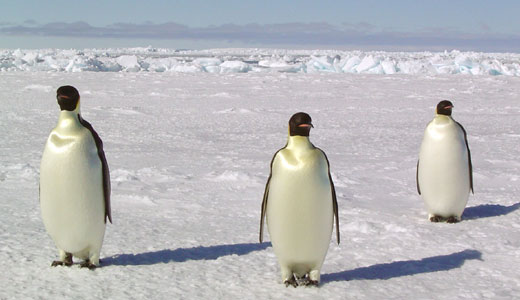
According to studies by the National Snow and Ice Data Center and other monitoring organizations, Arctic sea ice has now reached its lowest extent ever recorded, becoming a real harbinger of climate change.
“This is an indication that the Arctic sea ice cover is fundamentally changing,” said NSIDC scientist Walt Meier of the phenomenon. “The Arctic used to be dominated by multiyear ice, or ice that stayed around for several years.”
“Now it’s becoming more of a seasonal ice cover and large areas are now prone to melting out in the summer,” added NSIDC director Mark Serreze.
This year’s record of melting sea ice beat out the previous one recorded several years ago. Satellites showed the ice levels had shrunk by 1.6 million square miles on August 26 – three million square miles more than in 2007.
“The previous record,” Serreze continued, “occurred because of near-perfect summer weather for melting ice. But, apart from one big storm in early August, weather patterns this year were unremarkable. The ice is so thin and weak now, it doesn’t matter how the winds blow.”
Julienne Stroeve, another NSIDC scientist, remarked, “Only 15 years ago, I didn’t expect to see such dramatic changes – no one did. The ice-free season is far longer now. Twenty years ago, it [lasted for] about a month; now it’s three months. We can expect the Arctic to be ice-free in the summer by the year 2050.”
Experts point out that the rapidly vanishing ice will have dire consequences. If the white ice no longer reflects sunlight back into space, the region will be expected to heat up much more than it is currently doing. Ocean temperatures will increase as a result, and that will have unknown – but troubling – effects on weather systems in northern latitudes.
And, as Greenpeace UK director John Sauven explained, “These figures are not the result of some freak of nature, but the effects of man-made global warming caused by our reliance on dirty fossil fuels.
“These preliminary figures provide irrefutable evidence that greenhouse gas emissions leading to global warming are damaging one of the planet’s critical environments – one that helps maintain the stability of the global climate for every citizen of the world.”
And the disappearing ice will have a negative effect on more than simply the weather; if warming trends in global climate continue, scientists say, wildlife like the Emperor penguins could be pushed toward extinction.
That prediction was determined as part of a larger study led by biologist Stephanie Jenouvrier, of the Woods Hole Oceanographic Institution, a nonprofit oceanographic research organization. The study, to which Serreze and Stroeve contributed, was published in June in the journal Global Change Biology.
Using sea ice predictions from climate models and information provided by historical sea ice observations, the researchers studied a population of Emperor penguins on the coast of Terre Adelie in Antarctica. The study concluded that the penguins could reach extinction as soon as the year 2100 if temperatures continue to rise at their current rate.
“Reductions in the sea ice will surely affect the penguin population,” said Stroeve.
“As it is,” added Jenouvrier, “there’s a huge mortality rate [for penguins] just at the breeding stages, because only 50 percent of chicks survive to the end of the breeding season, and then only half of those fledglings survive until the next year.”
Carl Christian-Olsen, president of the Inuit Circle Council in Nuuk, Greenland, said that Inuits and their way of life are also at risk. “Every one of the 56,000 Inuits has had to adapt to the retreat of the ice,” he explained. “The permafrost is melting and this is jeopardizing roads and buildings. The coastline is changing, there’s more erosion and storms, and there are fewer mammals, like polar bears. It will have unpredictable effects on social change.”
A Greenpeace spokesperson concluded, “The disappearing Arctic serves as a stark warning to us all. Data shows us that the frozen north is teetering on the brink. The level of ice has remained far below average and is getting thinner, leaving it more vulnerable to future melting. The consequences of further rapid ice loss at the top of the world are of profound importance to the whole planet. This is not a warning we can afford to ignore.”
Photo: Emperor penguins face extinction if current warming trends persist. National Snow and Ice Data Center









